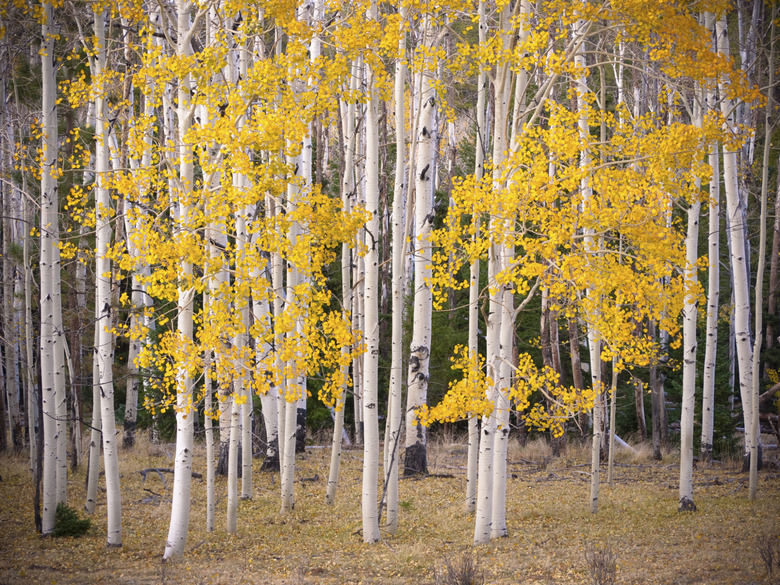Difference Between Birch Trees And Aspen Trees
We may receive a commission on purchases made from links.
Both the birch and the aspen are slender, lovely forest trees with pale silvery bark and a brilliant yellow fall display. Both are deciduous trees and are native to North America, but each of these appealing trees has its own interesting story.
Meet the Birch Tree
Meet the Birch Tree
The birch tree (Betula spp.) is found in the wild throughout the cooler zones in North America, Europe, and Asia. There are some 50 known birch species, and they are hardy in U.S. Department of Agriculture plant hardiness zones 3 to 9. All birches prefer moist, well-drained soil and are quite cold hardy. They are more sensitive to heat and react poorly when water is scarce.
Birches can grow to 100 feet tall in ideal cultural conditions, but they often stay half that height in cultivation. They can live up to 100 years or more. Birch sap and leaves are edible and are considered nutritious for humans and animals. In fact, the trees are a crucial food source for wildlife, including moose, deer, birds, and beavers.
Meet the Aspen Tree
Meet the Aspen Tree
Aspen trees (Populus _tremuloides_) really stand out against hillsides of conifers thanks to their slender, white trunks and "quaking" green leaves. These deciduous trees blaze in fall as their leaves turn a brilliant yellow. An aspen is rarely lonely. These amazing trees grow in clumps from massive underground roots. In fact, a stand of aspen is considered one singular organism, not many separate trees. Each tree in the stand is genetically identical to every other one.
Look for these stands of aspen in the coldest areas of the continent since they are hardy from USDA zones 1 through 7. They prefer moist soil but are seen growing in deserts as well if there are underground springs nearby. They absolutely require sunshine and grow not just in summer but all year long, serving as food for deer, moose, beavers, porcupines, and black bears.
How to Tell a Birch From an Aspen
How to Tell a Birch From an Aspen
Although both birch and aspen have a light and magical look about them, it's not difficult to tell which is which if you know the elements to look for. First, there is the cloning element of aspens. You find them growing near one another in large groupings from the same underground system. This helps them take over burned areas quickly. Birch trees are usually found in much smaller groups and regenerate from seeds.
If the stand is growing happily in a full-sun location, the trees are aspen, not shade-loving birch. If the pale bark of the tree is peeling, it is a birch and not an aspen since aspen bark is tightly wrapped.
Look closely at the leaves. While both types of trees have rounded leaves, birch leaves are longer than aspens and could be called spear-shaped. Aspen leaves are rounder than birch, and their teeth are finer.
